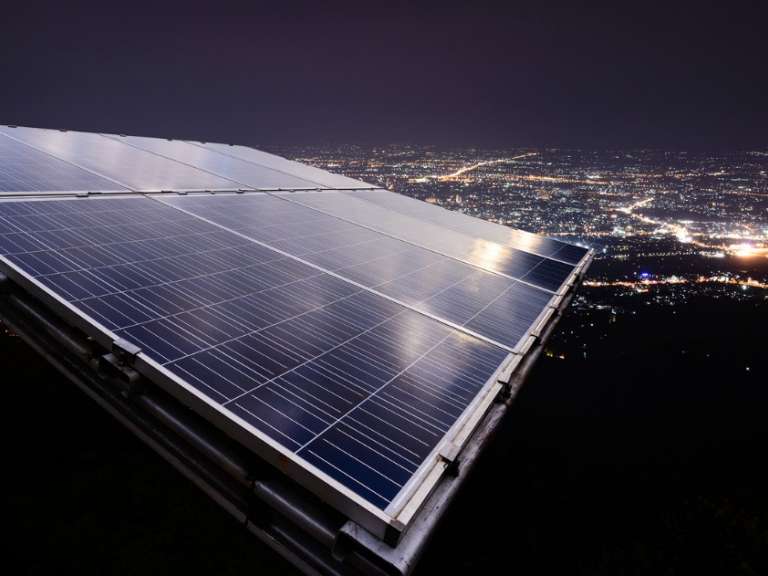Why Virtual Power Plants Are Becoming a Reality
Alex ForbesAs DERs and DR become more prevalent in electricity supply systems, virtual power plants will play a crucial role in managing and trading all these assets.

The world's electricity economy is shifting from an almost-total dependence on large, centralized power stations to a much more diverse and diffuse electricity supply system. Over the past decade, the technologies driving this shift have made the concept of the virtual power plant possible.
This still-nascent technology promises to enable distributed energy resources and participants in demand response programs to trade in the wholesale markets that are generally reserved for large generators. So what are virtual power plants? How do they work? And how vital are they to our energy future?
Rapid growth in renewable energy sources, automated demand response systems, battery storage of electricity, and a host of other power and data technologies is creating an energy cloud—analogous to the internet cloud.
The transition brings many advantages. Consumers who generate their own electricity can now sell any excess into the grid—to become producer–consumers, or "prosumers." A more distributed electricity generation system can reduce stress on transmission and distribution systems. The rise of automated demand-side load management—or demand response (DR)—can contribute to managing the natural variability of wind and solar power. Ultimately, a more distributed electricity system should enhance security of supply.
But the transition also presents new challenges. In a large-scale power network, electricity generation has to match demand on a real-time basis, because storage options remain limited and relatively expensive at present. Any disparity can quickly lead to unacceptable voltage or frequency shifts.
Managing an array of large-scale, centralized power stations is a complex enough task in itself. It's generally entrusted to specialist system operators, because of the vital role that electricity plays in most human activities and the need to ensure that wholesale markets function properly.
But what happens when there are hundreds of thousands or millions of small generators and responsive loads to control?
One answer to the management of distributed generation is net metering. If a small, say residential, prosumer has solar panels installed on their roof, a smart meter can manage two-way power flows. It can bill the consumer for power taken from the grid and calculate what the consumer is owed for power fed into the grid, according to the appropriate feed-in tariff.
A more sophisticated approach is to aggregate a number of small generators and responsive loads and apply information and communication technologies to control them. When applied effectively, such technologies—which bring together the Internet of Things (IoT), smart meters, smart thermostats, and sophisticated management software—can make them work together as if they were a large-scale power station: a virtual power plant (VPP).
One of the world's first VPPs began operating in Germany around a decade ago. Utility RWE had nine small hydroelectric power plants that it wanted to operate as a group so that it could bid their combined output into the wholesale market. Today, Germany remains a leader in the implementation of VPPs, such as the one operated by Next Kraftwerke, which networks around 4,800 medium- and small-scale power-producing and power-consuming units in central Europe.
"Our concept paves the way for a new economic and reliable energy system based on renewable energies, contributing to a democratized energy world," says founder and CEO Hendrik Sämisch.
Today, the number of VPPs is still relatively small, as the companies involved in the technology climb a steep learning curve. But strong growth is anticipated over the coming decade. Consulting firm Navigant expects global VPP implementation spending to reach $2.1 billion annually by 2025, with software representing the largest revenue opportunity.
To begin with, VPPs tended to focus either on distributed energy sources (DERs) or on DR. That is changing.
"The mixed-asset VPP has achieved dramatic growth in the last couple of years and is the preferred platform in today's market, particularly as the role of energy storage grows," says Peter Asmus, principal research analyst with Navigant. "Mixed-asset VPPs can also include everything from diesel generators to heat pumps and electric vehicles, and some are more focused on thermal energy than electricity."
So what does a VPP look like in physical terms? It starts with DERs and DR loads. These need to be connected with wires to the grid to allow power to flow. Each source or load will require some kind of edge controller. And each edge controller will need to be connected to the (internet) cloud so that control signals and data can be transmitted. Interfaced to the cloud will be some kind of trading app that can look at the location and performance of all the source and load devices. That app needs to be connected to the wholesale electricity market platform to allow trading to take place.
A crucial difference from conventional, centralized power stations is that, in a VPP, the owners of the assets retain ultimate control. Users have the power to opt out, if, for example, they want their air conditioning to continue running rather than be curtailed. So VPP operators need to work on a statistical, rather than a deterministic, basis.
In the future, as this market progresses, there will be many different types of players. The winners will be the ones that are able to marry the technology components with the best-possible knowledge of asset owner behavior.
Demand-side response technology can help utilities better manage load dispatch at times of peak demand, gain greater insight into customer behavior, and capture new revenue streams.
Power plant managers should keep watch for energy industry trends in 2017: rise of distributed generation, fuel mix changes, digital technology, and more.
Sophisticated industrial facilities like power plants are increasingly turning to 3D visualization techniques to streamline plant operations and maintenance over the asset life cycle.